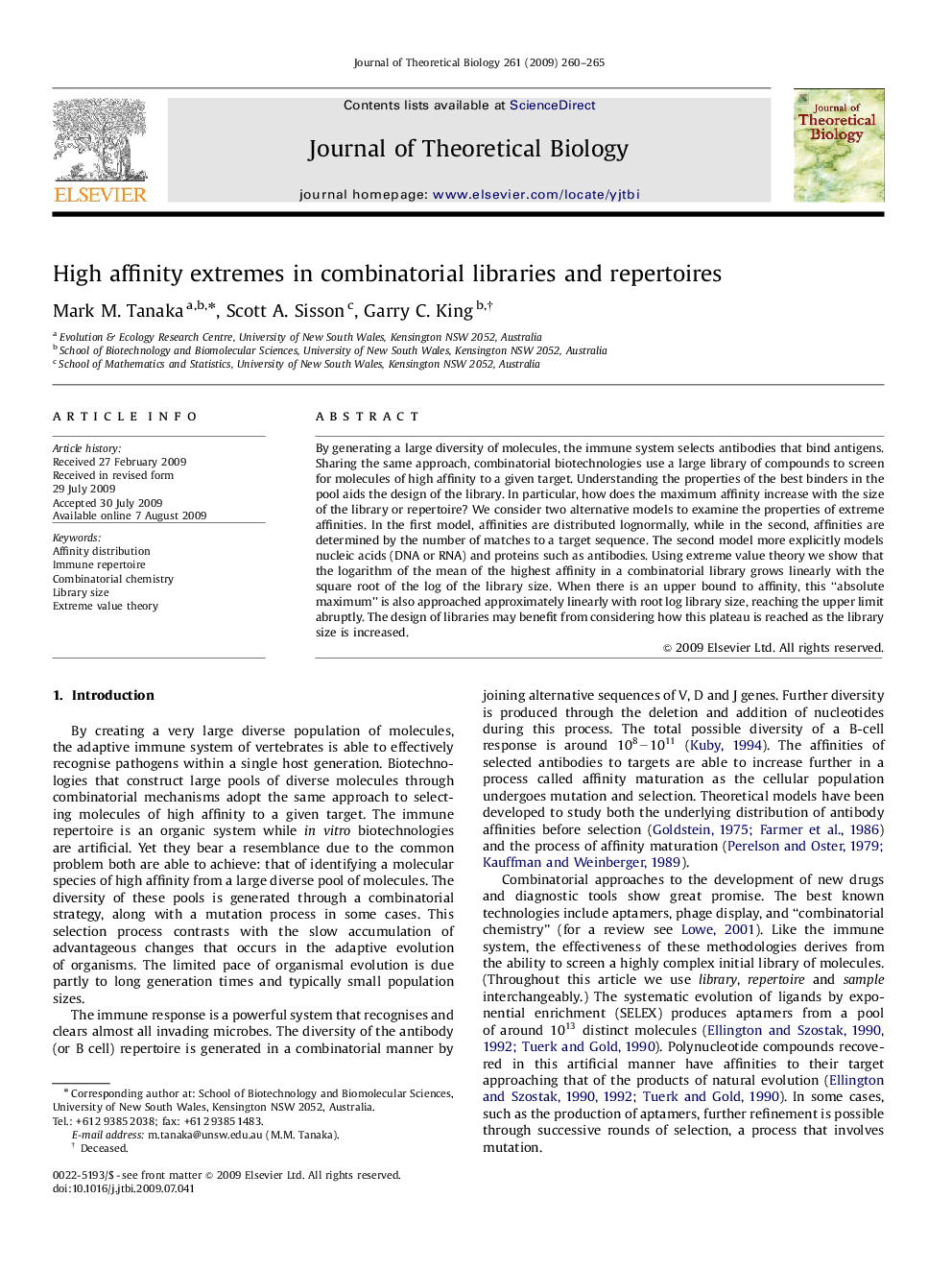| Article ID | Journal | Published Year | Pages | File Type |
|---|---|---|---|---|
| 4497785 | Journal of Theoretical Biology | 2009 | 6 Pages |
By generating a large diversity of molecules, the immune system selects antibodies that bind antigens. Sharing the same approach, combinatorial biotechnologies use a large library of compounds to screen for molecules of high affinity to a given target. Understanding the properties of the best binders in the pool aids the design of the library. In particular, how does the maximum affinity increase with the size of the library or repertoire? We consider two alternative models to examine the properties of extreme affinities. In the first model, affinities are distributed lognormally, while in the second, affinities are determined by the number of matches to a target sequence. The second model more explicitly models nucleic acids (DNA or RNA) and proteins such as antibodies. Using extreme value theory we show that the logarithm of the mean of the highest affinity in a combinatorial library grows linearly with the square root of the log of the library size. When there is an upper bound to affinity, this “absolute maximum” is also approached approximately linearly with root log library size, reaching the upper limit abruptly. The design of libraries may benefit from considering how this plateau is reached as the library size is increased.
